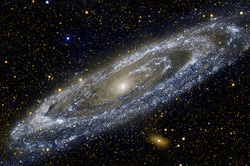 American astrophysicists using orbital telescope Hubble was able to identify a "galactic heartbeat", as they call it. We are talking about the pulse of the stars, which for their own lives are undergoing a Grand transformation, swell at the end and absorbing the entire planet. American astrophysicists using orbital telescope Hubble was able to identify a "galactic heartbeat", as they call it. We are talking about the pulse of the stars, which for their own lives are undergoing a Grand transformation, swell at the end and absorbing the entire planet.
As they say in the article, published in the scientific journal of the Harvard-Smithsonian center for astrophysics, during its existence luminary like our Sun undergo substantial transformation. For example, the stars become extremely bright, and swollen to enormous size, consuming the planets trapped within the distance from the Earth to the Sun. Towards the end of his own life such stars begin to pulse, increasing and decreasing its own brightness to a higher level every few hundred days.
After examining a series of original images of the elliptical galaxy Messier 87 (M), located 53 million light-years from Earth in the constellation Virgo, acquired with the Hubble space telescope, scientists found like stars in our milky Way. Thousands of similar bodies "pulsate", 1 to name a few of the last stages of his own life.
"We realized that these stars are so bright and their pulsations are very strong, and it's hard to hide. We managed to find the "pulse" of thousands of stars in the galaxy", says Dr. Charlie Conroy of the Harvard-Smithsonian center for astrophysics.
Considering the opinion of the researcher, this discovery allows to considerably specify the age of the galaxy, because the force and the speed of this "galactic heartbeat" varies based on age. For example, astrologers could determine that the age M is about 10 billion years.
sections: Society
|